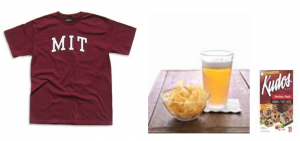I’ve spent the day looking at the impact factor of various journals.
The ISI Web of Knowledge lists 1985 social science journals (according to a workshop I attended recently, only about 15% of education journals are in ISI). The ‘Annual Review of Psychology’ comes in top for 2008, with an annual impact factor of 16.217.
The impact factor is obtained by looking at all articles in the journal over the last two years (2006-7), and all citations of those articles in 2008. Divide the citations by the article and you get the impact factor. So if, on average, every article was cited once in 2008, you get an impact factor of 1. If every article was cited twice, you get an impact factor of 2. If only half your articles were cited, you get 0.5.
Of the social science journals that are listed (and many of them are not), 1685 have impact scores of less than two. On the bright side, there are 300 journals out there where your article will, on average, be cited twice a year. I’m assuming that this means it will be cited in one of the 1985 journals listed in the social science section of the ISI web of science – but I can’t find that information on the site.
Social science, though, is a broad field. Educational technology journals in which I am likely to publish tend to attract fewer than two citations per article. ‘Computers & Education’ is the honourable exception, It comes in at 244 on the list, with an impact factor of 2.19. I’d be better off becoming an expert in psychology, psychology or marketing. Education doesn’t really make it into the list until no 75, with the US Journal ‘Educational Psychologist’.
Does it matter? It does in two ways. First, the REF will be looking at impact – so we are increasingly being encouraged to go for quality, not quantity. Don’t just publish; publish in the top-rated journals. Second, I like to think that my work could/will have impact. I’m not convinced that the best way to achieve that impact is through journals (two citations a year may not be as good as five links in a blog or ten retweets on an education list). However, given that my career prospects rest, in part, on my publication record, it makes sense to prioritise the journals with the most impact.
So, I’ve sketched out some potential articles and where I might publish them. The list is significantly different from the one I had this morning when I started looking at impact factors. I may not end up writing these articles – I may not end up publishing what I write in these journals – but their impact rating is definitely affecting my thinking about what and where to publish.
Applied Linguistics (2.22)
Building knowledge in the short term
Computers and Ed (2.19)
Methodology paper
JCMC (1.9)
Building knowledge in the long term
Discourse Studies (1.16)
Avoiding disputational talk
JCAL (1.06)
Interaction on distance-learning courses
BJET (1.04)
SL paper
Improving Schools
School Visions
Learning, Media and Technology
Young users of Web 2.0
JIME
Epistolary interviews – research ethics
